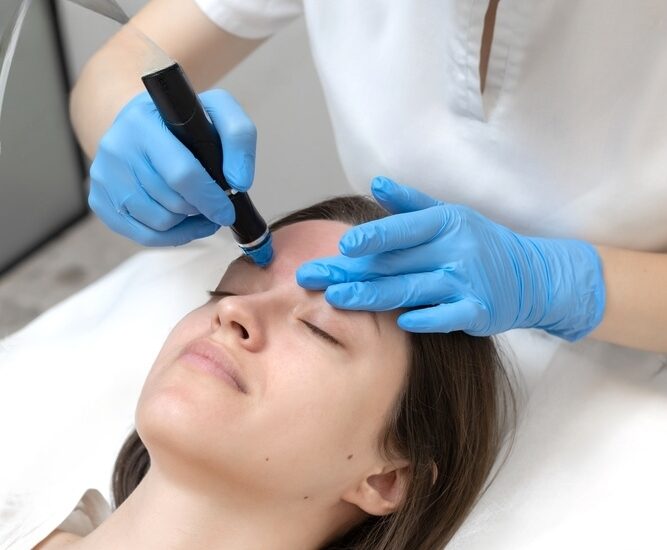Well-defined and prominent cheeks can greatly enhance one’s facial features and overall elegance. The volume, appearance, and complexion of the cheeks play a significant role in defining an individual’s unique look and aesthetic appeal. However, factors such as aging, poor lifestyle choices, inadequate diet, and genetics can cause the cheeks to lose volume and attractiveness. Fortunately, cheek filler injections in Islamabad offer a effective solution to restore lost volume, plumpness, and refinement to the cheeks.

Cheek Fillers Injection: Overview
The proteins collagen and elastin play a crucial role in maintaining smooth, tight, and radiant skin. However, as we age, their production slows down, leading to a loss of skin elasticity and glow. Additionally, some individuals may struggle with asymmetrical or undefined cheeks, affecting their overall facial aesthetic. Cheek fillers injection in Islamabad offers a cosmetic solution to reshape and enhance the beauty of the cheeks. This procedure utilizes specialized dermal fillers to address aesthetic concerns related to the cheeks, effectively restoring lost volume, rejuvenating appearance, and reviving a youthful complexion.
What is Cheek Filler?
Cheek filler is a nonsurgical cosmetic procedure that gives your cheeks a fuller, more defined look. A healthcare provider injects safe substances called dermal fillers around and above your cheekbones.
Healthcare providers offer many kinds of cheek fillers. Your provider will discuss the best option for you based on your treatment goals.
Cheek fillers usually take less than half an hour to inject. Depending on the type of filler you use, results can last a year or more. As with other cosmetic procedures, cheek filler injections have risks, including bleeding and bruising.
Why is Cheek Filler used?
You may want cheek filler to:
- Define and enhance your cheekbones.
- Increase volume of your cheeks.
- Look more youthful.
- Plump up wrinkles.
- Stimulates collagen production
What are the types of cheek filler?
Different types of dermal fillers can enhance the appearance of your cheekbones. How the cheek fillers work depends on the type of filler your provider uses:
- Hyaluronic acid (HA)
- Calcium hydroxylapatite (CaHA)
- Poly-L-lactic acid (PLLA)
- Polymethylmethacrylate (PMMA)
- Stimulates collagen production
Who shouldn’t Get Cheek Filler?
You shouldn’t get cheek filler if you are pregnant or breastfeeding (chestfeeding), or if you have:
- Allergies to synthetic substances found in some dermal fillers.
- A bleeding disorder such as hemophilia or thalassemia.
- Certain autoimmune conditions.
- Certain infections such as an abscessed tooth, ear, nose or throat infections, or stomach flu (gastroenteritis).
- Certain skin diseases.
- Tuberculosis.
Before The Procedure:
Before undergoing the Sculptra filler procedure, minimal preparation is required. However, to ensure a smooth and safe experience, it’s recommended to avoid blood-thinning medications like aspirin, quit smoking and drinking alcohol, and use a high-quality sunscreen for skin protection. It’s essential to discuss your medical history, allergies, and any ongoing health issues with your practitioner beforehand. They will address any concerns, such as existing allergies or infections, before proceeding with the treatment.
During The Procedure:
Before you get cheek fillers, you’ll have a consultation. You may want to see a dermatologist or plastic surgeon who specializes in dermal filler injections.
During the consultation, your provider will look at your face and ask about your treatment goals. They’ll suggest the most suitable cheek filler for you. They may suggest other cosmetic procedures to supplement cheek fillers.
After The Procedure:
Your provider may apply cool packs to the areas of injection immediately after the cheek filler procedure. For a few days after cheek filler injections, you may have:
- Bruises.
- Discomfort.
- Swelling.
With most types of cheek filler, you’ll usually see some results immediately after the procedure. But it often takes several days and sometimes several months to see full results. PLLA results can take up to two to three weeks.
If you have a PMMA filler, you’ll need to massage the treated areas for about 5 minutes several times a day for one to two weeks.
What are the Risks or Complications of Cheek Filler?
- Bleeding.
- Bruising.
- Bumps that look like acne.
- Hives.
- Itchiness.
- Redness.
- Nodules.
- Swelling and tenderness.
What are the Advantages of Cheek Filler?
Compared to more invasive cosmetic surgeries, the advantages of cheek filler include:
- Immediate or near-immediate results.
- Less expense.
- Low risk of complications.
- Non-permanent results, so changes are possible.
- Quick procedure and recovery with little or no downtime afterward.
Book Your Appointment With Us!

Understanding Acne: Causes, Treatments, and Prevention
September 24, 2024

Summer Skincare Tips: How to Beat the Heat
September 24, 2024

Hydrafacial for Acne-Prone Skin
September 24, 2024

Hair Transplant Techniques: FUE vs. FUT Explained
September 24, 2024

Understanding Alopecia: Types, Causes, and Treatment Options
September 24, 2024

Hydrafacial: The Ultimate Treatment for Healthy, Glowing Skin
September 24, 2024
The Importance of Regular Skin Check-Ups: Why Dr. Abbas Shah Recommends Them
September 24, 2024

Acne Treatment
September 24, 2024

Hydra Facial
September 24, 2024

Micro Hair Transplant
September 24, 2024

Alopecia
September 24, 2024

PRP Therapy
September 23, 2024

Botox
September 22, 2024
